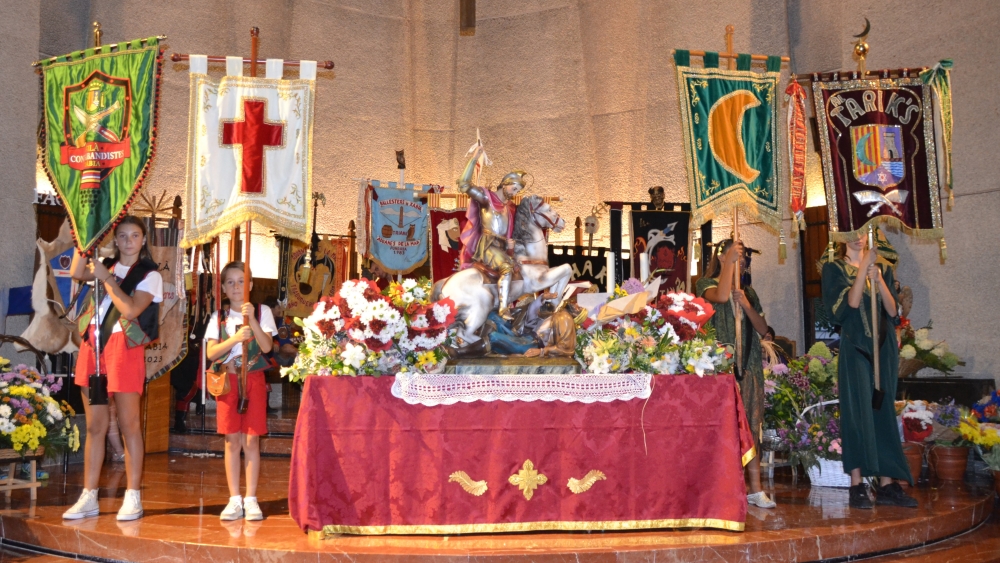
Who was Sant Jaime?
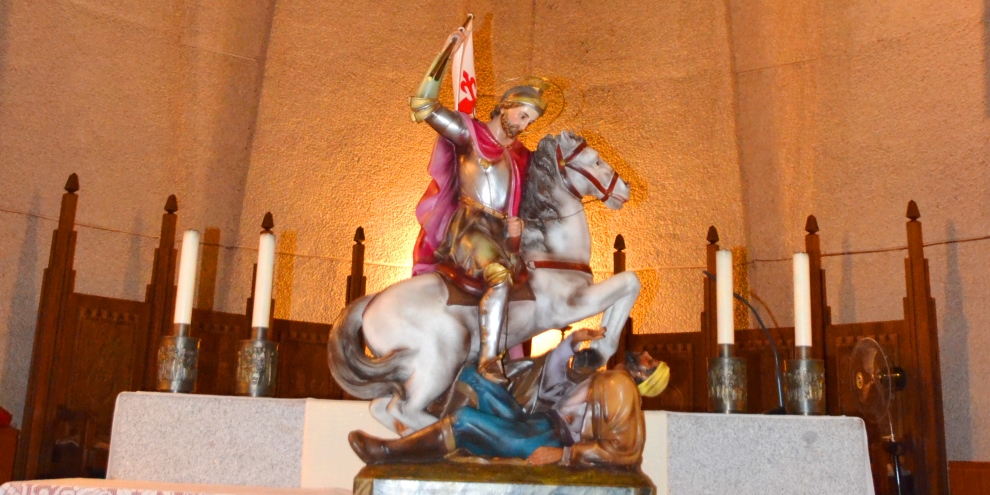
It has often been asked why the Moros i Cristians de Xàbia is held in July, when the temperatures are reaching their highest and the participants sweat under heavy costumes and helmets. The reason is that the celebrations are held in honour of Sant Jaime, whose feast day falls on July 25th each year. So who was Sant Jaime and why is he so important that many Moros i Cristians fiestas across the region are held in his honour?
James the Great was one of the Twelve Apostles of Jesus Christ and the first to be martyred after his execution by sword on the orders of Herod Agrippa in 44 CE. After his death, his followers took his body to Hispania, where in life he had preached the gospel, and landed in Iria Flavia in modern-day Galicia before carrying his remains inland for burial. They were subsequently lost in time.
According to legend, a hermit called Pelagius, whilst watching over his sheep, observed mysterious showers of stars in the night sky above the same hill in the forest of Libredón on several nights. He reported this phenomenon to Bishop Theodemir of Iria Flavia (modern-day Padrón) who went to see this supposed miraculous sight for himself.
On the night of July 25th 812 CE, the bishop and his entourage discovered a stone sepulchre in dense vegetation in the location below where the showers of stars fell, inside of which lay the remains of three men who were identified as James the Great and two of his disciples, Theodore and Athanasius.
Recognising the discovery as a miracle, the bishop informed Alfonso II of Asturias who ordered the construction of a chapel on the site. This modest chapel would become the destination of one of the Medieval Period’s greatest pilgrimages and subsequently would become itself the grand cathedral of Santiago de Compostela – Saint James of the Field of the Star – whilst the pilgrimage route would become the famous Camino de Santiago.
The Reconquista – the Reconquest of al-Andalus – was a series of offensive campaigns by Christian kingdoms following the Muslim conquest of the Iberian peninsula that last almost eight centuries and, amongst the historical facts and details, there are many legends that have helped define the Spanish nationality identity. One of them is the Battle of Clavijo.
The battle was said to have taken place in May 844, a clash between the troops of Ramiro I of Asturias and those of the Emir of Córdoba. Although there is no historical evidence that it ever happened, it was long regarded as a defining moment in the efforts of the Christians to remove the Muslim invaders from Iberia before historians eventually declared that the event was based on legend.
During the battle, James the Great suddenly appeared mounted on a great white steed to inspire the Christian troops to victory. As a result, the Apostle became a symbol of the fight against Islam and was known as Santiago Matamoros – Saint James the Moorslayer – and in the 12th century, a military order called the Order of Santiago was founded to continue the battle against the Moors.
In November 1760, Saint James / Santiago was declared the Patron Saint of Spain and ¡Santiago! or ¡Santiago y cierra España! became the battle cry of Spanish armies.
The Flower Offering – Centre Històrico de Xàbia
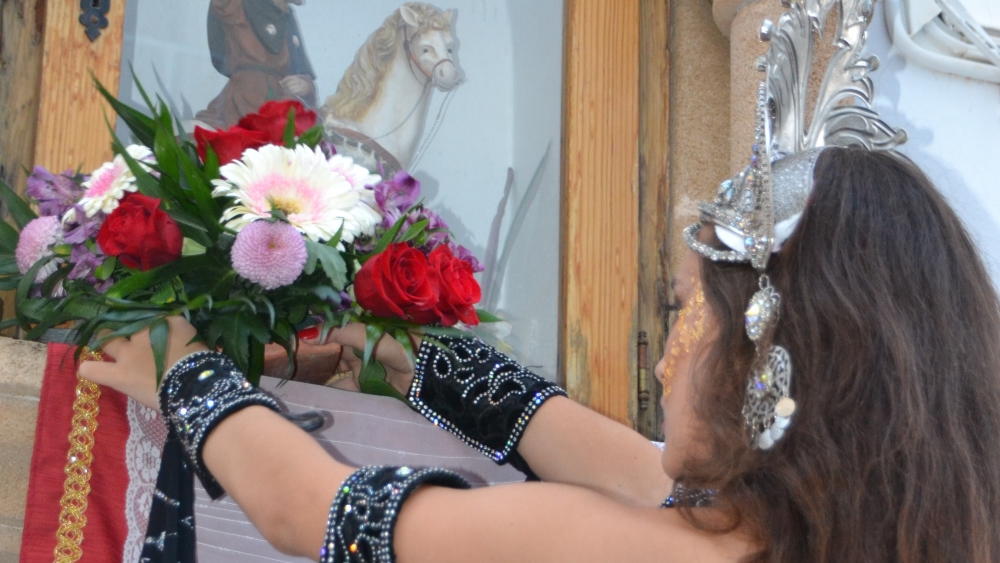
Although the fiesta is based in the port area, it does once move into the historic centre of Xàbia for a special flower offering at the niche of San Jaime. The saint is located at the eastern end of a narrow street which runs parallel to the Ronda Sur, a road which is now called Carrer del Ravalet but was once called Calle San Jaime – the street of Saint James, the patron saint of the Moros i Cristians de Xàbia.
The filaes gather in the Plaza de la Marina Alta – otherwise known as the ‘Post Office Square’ – on a warm Tuesday evening. From there, they parade in a fairly informal fashion down Avenida de Principe Asturias and through Placeta del Convent on their way to the niche.
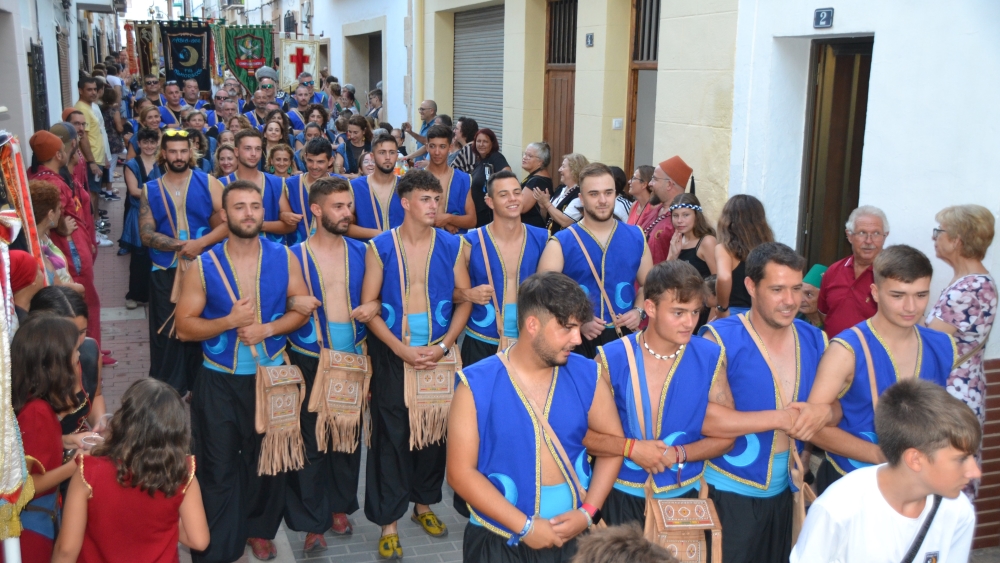
When they reach the western end of Carrer de Ravalet, the filaes stop, organise themselves into proper rows and then parade proudly down the street, welcomed by the residents who have already prepared a table of drinks and snacks. They gather at the other end where the niche is located to watch the flower offering made by the two standard bearers and the captain, cheered on by their parents filaes and heralded by the obligatory rockets bursting into the darkening sky above the street.
Afterwards there is an opportunity share some mistela, traditional coca maria and doughnuts offered by the residents of the street; everyone is welcome to take part and enjoy the food and drink so don’t stand on ceremony – there’s no better way to get to know others. Sometimes the bands break into a bit of spontaneous playing at the end of the street, prompting some spirited dancing from the companies which inevitably ends up with a slow march down the road, different units’ joining together with locked arms to either sway majestically like a Moor or march purposefully like a Christian.
The Flower Offering – The Loreto Church
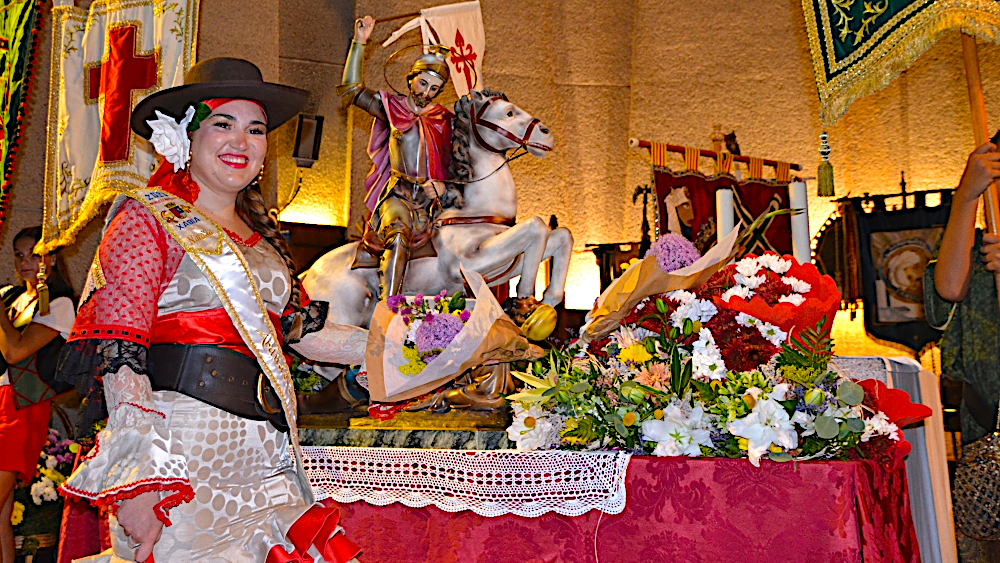
The following day, there is another offering of flowers is made to San Jaime, his image placed in the iconic church of Nuestra Señora de Loreto back in the port area of Xàbia. There is another procession which starts under the archway in Calle Pio X, the filaes dressed in their colours alongside representatives from the town hall and other fiesta commissions. They process around the streets of the port, accompanied by the bands, taking the long route right back to where they started – almost.
Outside the church, each fila waits patiently to hand over their bouquets in a solemn offering of colour to this special saint. In recent years, the filaes have also made a donation of food to Caritas, a Catholic Church organisation which assists those in trouble, without any distinction, and these donations are handed over just outside the main doorway.
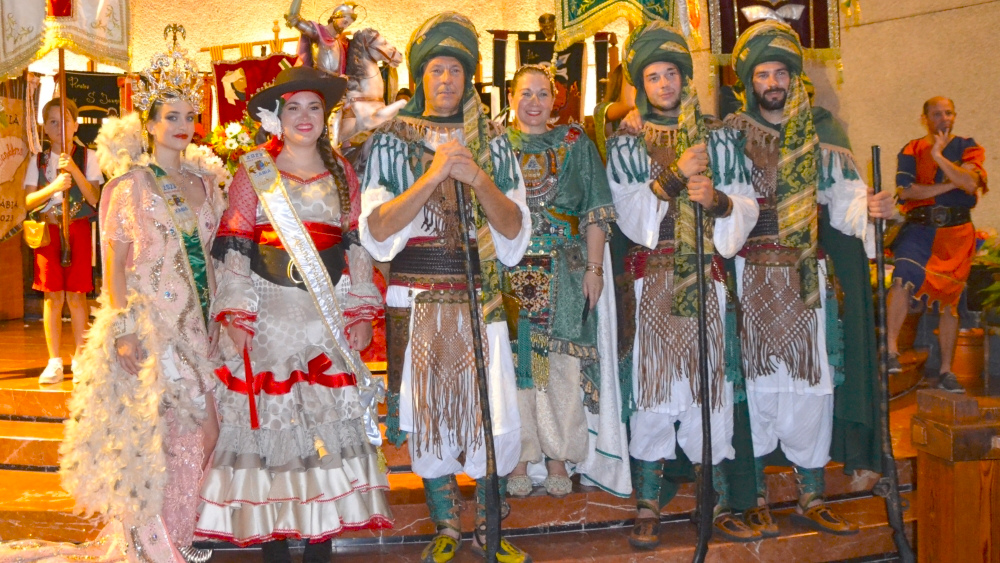
Entrance to the church is available to anyone so if you want to watch the proceedings, you can slide into the building through one of the several openings in its side – or indeed through the main door, although this will be largely occupied by the filaes. Be aware that the first few rows are normally reserved for the filaes themselves.
Each fila will make their offering and poses for photographs; the members of the town hall and the other fiesta commissions do the same. The standard bearers arrive with the full pomp worthy of their positions, followed by the captains and there is the inevitable scramble for photographs This is followed by a short blessing made by the priest.
Moros i Cristians de Xàbia – The Format
- Moros i Cristians – HOME
- MIG ANY – Getting Ready for Fiesta
- The Presentation
- The Music and the Arenal
- The Flower Offerings
- The Invasion
- The Reconquest
- The Parades
- Becoming a Moor
